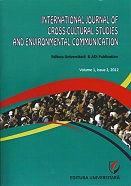Urban Irish America in Popular Press at the Turn of the Twentieth
Urban Irish America in Popular Press at the Turn of the Twentieth
Author(s): Nicoleta StancaSubject(s): Literary Texts
Published by: Editura Universitară & ADI Publication
Keywords: city; Irish America; cartoons; caricature; magazine; identity; politics
Summary/Abstract: Beginning 1840s, the humour magazine Puck suggested that New York‟s immigrant ghettos were overbrimming with Irish dynamiters. The images that associated Irish newcomers with crime, drunkenness, sexual looseness, thievery, violence, desire for power, stigmatizing them as undesirable, led to an early overall picture of messy urbanism which disrupted the idyllic American dream. It was convenient to scapegoat an ethnically different other, so the Irish-American community at the end of the nineteenth century served the purpose. This case was especially illustrated by the obedient young Bridget and nationalist old Biddy series of cartoons in American popular magazines, such as Harper‟s, Puck and Munsey‟s. Cartoonists drawing for these magazines appropriated the British simian stereotype of the Victorian age to create negative stereotypes of Irish-American urban poor depicted as dirty, ignorant, abusive, violent, target of mockery, yet teller of jokes. Interestingly, as Biddy may have been in charge of the American kitchen, the Irish were in charge of American urban politics and in the 1880s, Irish-born personalities were elected for the position of mayor of New York and Boston, thanks to the strong links between the Catholic hierarchy and Democratic politicians. Though late nineteenth century representations of the Irish in America seem to have reinforced the sense of the ethnic other, the Irish started assimilating probably due to the triad of language, religion and politics.
Journal: International Journal of Cross-Cultural Studies and Environmental Communication
- Issue Year: 1/2012
- Issue No: 02
- Page Range: 59-67
- Page Count: 8
- Language: English

